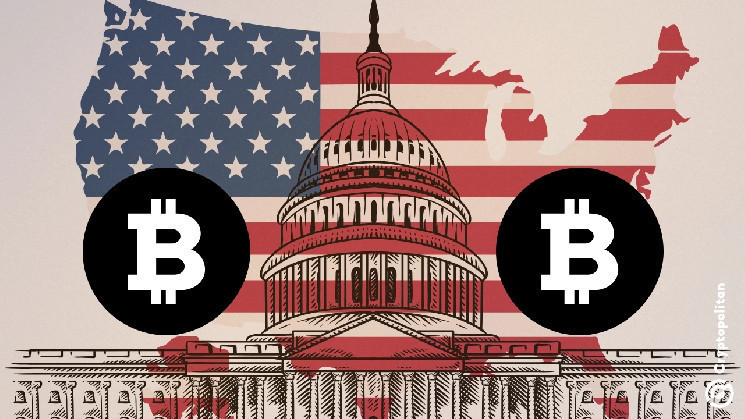A proposal for the United States to amass a million Bitcoin sounds like something pulled out of a nerd’s wildest dreams, but it’s an actual idea on the table.
A few months ago, Senator Cynthia Lummis of Wyoming dropped a bill that aims to create a “strategic bitcoin reserve.” Her plan? Get the Treasury and Federal Reserve to buy a million Bitcoin over five years and stash it for at least 20 more.
If passed, the program would essentially transform Bitcoin from a decentralized experiment to a federally endorsed hedge against… well, everything.
For Bitcoin holders—hodlers, as they call themselves—this bill is the ultimate jackpot. It’s the government’s acknowledgment of Bitcoin’s credibility as “freedom money.”
But let’s be real: if you owned a stack of Bitcoin and suddenly the richest, most powerful country on the planet declared they’d be buying truckloads of it, you’d probably be popping champagne too. It’s like owning a few Andy Warhol paintings and hearing Washington announce they’re creating a national Warhol museum.
But here’s the thing: Lummis’s bill raises more questions than answers. The plan sounds bold, sure, but where’s the money coming from? According to the proposal, the Federal Reserve’s surplus profits would fund these Bitcoin purchases.
There’s just one tiny problem—the Fed doesn’t currently have surplus profits. No problem, right? Lummis suggests revaluing the Fed’s gold certificates to market prices and funneling the difference into Bitcoin. Creative? Yes. Impressive even. But plausible? We’ll see.
Bitcoin’s appeal and its tricky reality
Imagine the US government holding 5% of Bitcoin’s total supply. That’s roughly one in every 20 Bitcoin in existence. The bill’s preamble argues this would diversify US assets, strengthen resilience, and, in theory, position America at the top of the financial food chain.
But those million Bitcoins can’t be touched until 2045. So in reality, the reserve isn’t really a reserve, it’s more like an expensive, long-term gamble.
Of course, we believe Bitcoin’s value will only keep rising over time. And we could be right. I say “could” because this is the most unpredictable market of all time.
Though Bitcoin’s track record shows it’s more than just a speculative asset. Research published in the Journal of Empirical Finance revealed some interesting trends. Bitcoin is frequently used to move money offshore, especially through places like the Seychelles.
It spiked in popularity during inflationary periods in Brazil and after sanctions in Venezuela. But here’s a reality check: its use plummeted in China after the country banned Bitcoin mining and trading. So while Bitcoin can act as money in specific scenarios, its utility is limited in countries with stable banking systems.
And let’s not forget crypto president Donald Trump. With his election, Lummis’s bill feels less like a pipe dream and more like a possibility, especially as the apex crypto is less than a percentage away from being worth $100,000.
The dollar’s strength vs. Bitcoin’s pitch
But before we ditch the dollar for digital gold, let’s get real about what’s kept the greenback going strong for over 50 years. It’s not backed by Bitcoin, gold, or any speculative asset.
Its strength comes from federal insurance, decent (and frankly quite flawed) banking regulations, and global agreements to stabilize offshore dollars during financial freak-outs. We might roll our eyes at this, but history doesn’t lie. The dollar is built on systems that, while imperfect, work.
This is where Bitcoin hodlers make a common mistake. Admittedly, we look at inefficiencies in the traditional financial system and assume it’s doomed to collapse. But the dollar has survived wars, depressions, inflation crises, and everything in between.
A global financial apocalypse might make Bitcoin valuable, but betting on that is like planning for the end of the world with your retirement fund. Historically, bank money has always crawled out of the rubble, bruised but intact. It’s the nuclear cockroach of finance. That’s the bitter truth.
A Bitcoin reserve would lock the US government into a massive policy conflict. If Congress ever wanted to limit Bitcoin mining or regulate trading, the Treasury’s own Bitcoin stash would lose value. Talk about shooting yourself in the foot.
Trump’s Treasury pick and crypto implications
Enter Scott Bessent, Trump’s likely pick for Treasury Secretary. A seasoned hedge fund manager and an alleged lover of cryptos, Bessent also brings serious Wall Street clout to the table.
He’s no stranger to risky bets, having served as chief investment officer for George Soros’s fund, which might raise eyebrows among conservatives, but Trump isn’t fazed. In his words, Bessent is “brilliant” and embodies the American Dream.
As Treasury Secretary, Bessent would play the most critical role in shaping the country’s economic policies, including any plans involving Bitcoin. If Bessent backs Lummis’s plan, it could gain real traction.
A Bitcoin reserve would put the Treasury in uncharted territory, tying national economic policies to a notoriously volatile asset. But hey! Maybe that’ll finally stabilize our market’s champ.
 cryptopolitan.com
cryptopolitan.com
